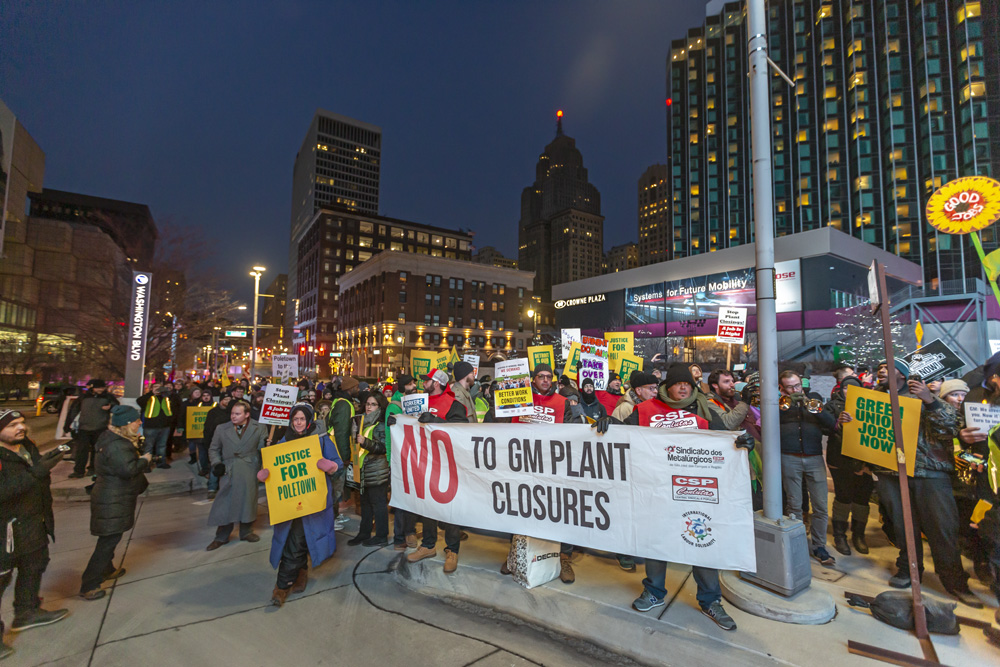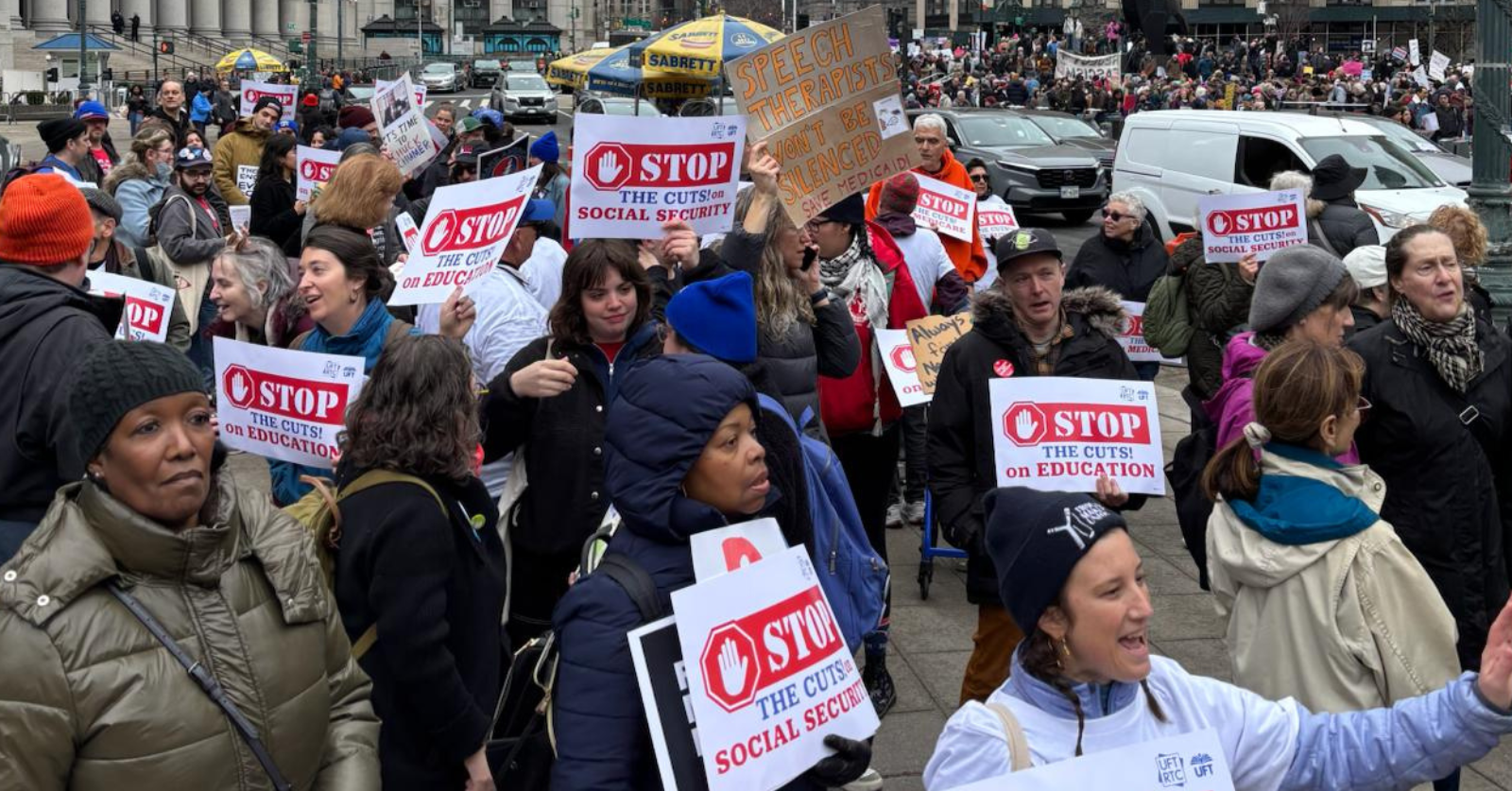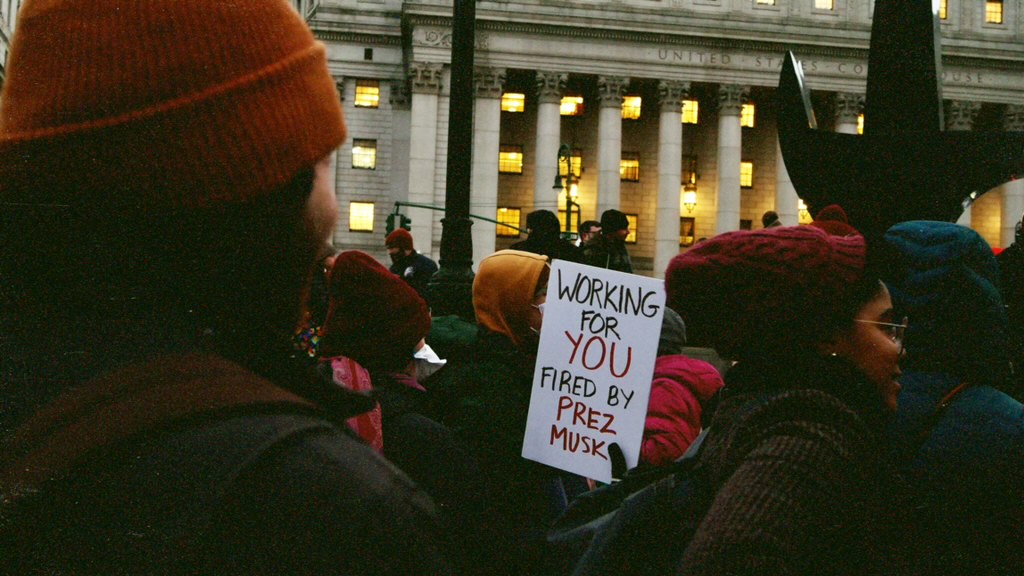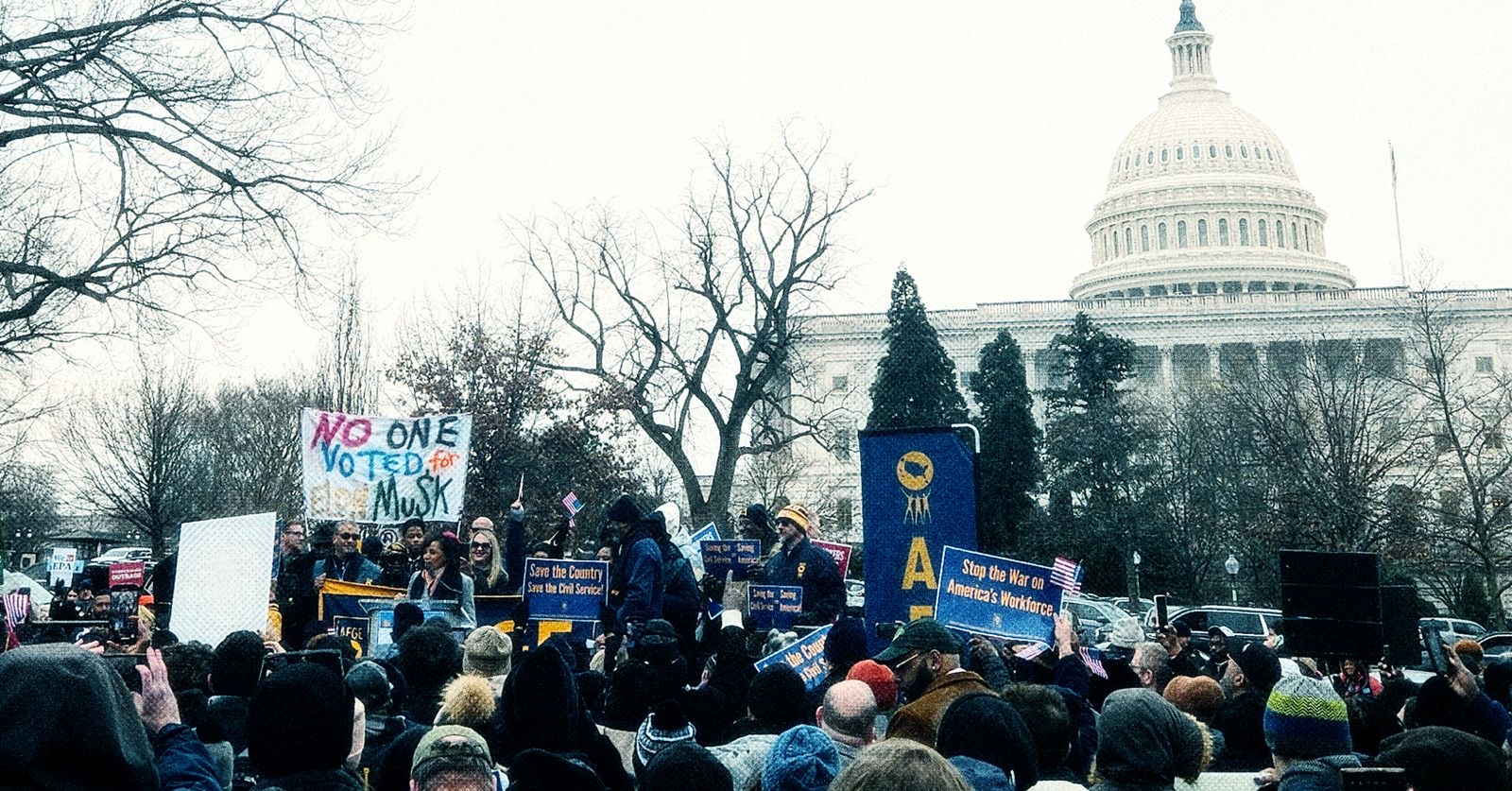We are all tremendously excited by the growth of the socialist movement in the last three years. But the growth of DSA alone is not enough to get us to socialism. DSA members know that we’re not going to get to socialism unless it’s won by the working class, and the U.S. working class today is atomized and divided. We see a resurgence of militancy in the teacher strikes, the most hopeful development in decades, and in the general strike in Puerto Rico, but the vast majority of the working class is not fighting back in such a concerted way.
How can DSA reach out to our fellow workers, find the on-the-ground leaders who already exist in every workplace, and work alongside them to organize workers to fight the boss? It’s when people are in motion fighting their employer, and even the state, that they become open to bigger ideas, including socialist ideas. We need to find the socialists of tomorrow.
That doesn’t mean we start off by bombarding them with propaganda. It means a long-range view, where we foresee working alongside our co-workers for years. It means starting with shop-floor issues that people can see a way to win, and doing the methodical work — all those one-on-ones — of getting co-workers on board. How do we start?
When Bread & Roses wrote our labor resolution, it was directed at tasks for the Labor Commission (DSLC), as its title indicates. It tells what the DSLC should do to help local labor working groups, working within the constraints and opportunities they face locally. So here’s some fleshing out of what chapters and local labor working groups can do. Bread and Roses’ labor Resolution 32 is consistent with Resolution 3 from Collective Power Network.
Our view is that the most effective thing DSA can do with its limited resources is to help build a layer of rank-and-file organizers in the workplace. We do think that working in unions is the priority and that people who want to try that should do it with a coordinated strategy. That means both developing our members as workplace leaders and identifying other workplace leaders and moving them closer to socialist politics over time. It makes sense to go where workers are already organized with structures in place that are ripe for repair and to build out from there.
We think that is the best way currently available to rebuild both the labor movement and the socialist movement. But it’s not the only way. Labor is so important, and DSA’s current level of workplace engagement is so low, that we advocate plenty of other ways for DSA members to relate to labor as well. All of these can be part of the rank-and-file strategy. At its heart, the rank-and-file strategy means closing the gap between organized socialists and the rest of our class, building a layer of rank-and-file organizers in the workplace, and fomenting struggle out of which new working class leaders will arise.
Educating Ourselves, Making Connections
Because of historically low levels of union density, a majority of DSA members are not well acquainted with the labor movement, through no fault of their own. So an important step is education about the role of the working class in fighting for socialism, the potential role of unions in fomenting class struggle, and the state of the labor movement in the U.S. today. So in Resolution 32, we encourage continued use of the DSLC’s Labor 101 curriculum and other educational materials, as well as traveling speakers and one-on-ones with more labor-experienced comrades, invitations to local labor people to speak with the chapter or with subsets thereof — anything that can help educate our members even if they don’t have immediate plans to do labor work themselves. Labor Notes’ books, conferences, and local Troublemakers Schools are an accessible and grounded resource.
Chapters should undertake a census of unions and worker centers in their area, looking for those who could be partners on our issues, where struggles are happening or brewing, or that simply are important players in the local economic or political scene, by virtue of size or function. The DSLC can help with this, sharing successful methods. At this stage the chapter may not be thinking about working within the unions but simply looking for connections.
Strike support is an obvious choice for DSA chapters wanting to connect to the labor movement. Strikes are the most dramatic expression of worker power when workers can most clearly recognize that we — not the bosses — are indispensable. These flashpoints of intense and naked conflict can open eyes more quickly and thoroughly about class struggle than a dozen years of ordinary work days.
In a well-run strike, members invent slogans, they strategize to find the boss’s weak points, they plot escalating tactics. They learn how to explain their goals to their neighbors and to the media. They may confront scabs, they may break laws. In short, they learn about power — the boss’s and their own.
For all these reasons, a strike can open workers up to left political ideas, especially if some leftist human beings are there in the fight with them.
It can be difficult for DSA chapters to know how to support a strike, more than showing up at a picket line, if connections haven’t yet been made. The excellent work of the East Bay DSA chapter in supporting the Oakland teachers’ strike in February, where members gathered and coordinated material aid (Bread for Ed) as well as swelling picket lines, was greatly aided by the fact that the chapter had teachers as members.
The DSLC has commissioned a pamphlet on how best to support strikes. One goal of that work should be to establish local DSA as a trusted ally that unions can count on when they are in a fight — a normal part of the labor scene. Such a pamphlet should be followed by local and national discussion groups and calls, sharing successes and lessons learned, and chapter-level planning for following up.
Another good way to connect to the local labor movement is through our Medicare for All (M4A) campaign. Call up local unions and ask to have a brief speaker at their monthly meeting or at some other appropriate body. Plenty of unions have endorsed M4A at the national level, but fewer are doing much about it locally. In Detroit, for example, an electrician DSA member arranged for a DSA M4A leader to speak to a young workers committee of his local — and older electricians came too.
This sort of work is also possible with the Green New Deal and through Labor for Bernie. DSA should be confident about presenting itself to local unions as a partner in these fights. The DSLC can help chapters strategize about which unions to approach first, such as those who endorsed Bernie in 2016 or those whose nationals have been active in the Labor Campaign for Single Payer.
Chapter members can also help organize local Troublemakers Schools, working with Labor Notes. These schools are highly educational and inspiring for chapter members who aren’t in labor, as well as ways for the chapter to tighten ties to the best elements of the local labor movement. Troublemakers Schools attract an inter-generational, racially diverse, working class attendance where attendees can easily find out more about DSA.
All these activities are part of the Rank-and-File Strategy, which is about closing the generations-long gap between socialists and the rest of the working class.
What About Non-Union Workers?
It seems clear that DSA can’t undertake organizing the unorganized itself in any strategically meaningful way. To think otherwise is hubris. We just don’t have the connections, the implantation in organizable workplaces, the cadre or resources needed. That’s why we need to both work with existing unions and work to transform them — so that they can use their huge potential resources to do so. Transforming unions is of course also a mammoth job, but it’s a more realistic way to get to organizing on the scale that’s needed.
At the same time, if DSA members have the potential to organize their own non-union workplaces, working with an existing union and with their chapter, they should do so. That work provides invaluable experience in what it takes to organize in a deep way, and it’s a life-changer for the individuals who undertake it. Every new shop organized builds worker power. The DSLC education subcommittee has begun a pamphlet on how to organize your own workplace.
If folks are not now in a workplace that is particularly impactful in their area, they may be inspired by their organizing experience to go on to bigger things. I know from personal experience. When I was in the New American Movement in the early 1970s, I took a clerical job specifically with the idea of getting experience in workplace organizing. It was definitely not a strategic workplace, but it was where I had a connection to an adjacent union drive going on. I helped lead a union campaign, we lost by one vote (my write-up was titled “Organizing in the Keyboard Sector,” since NAM was all about “key sectors”), and I learned a lot. Shortly thereafter I moved to Detroit and got a job as an outside repairperson at the phone company. (And five years later that workplace voted the union in.)
Doing It Together
DSA members can have a lot more impact if they work not as lone individuals but by getting jobs together in industries that are important in their area. Another personal story: After NAM, I was a Maoist. The group I knew was sending women members in one city into a coat hanger factory. When I met the International Socialists in 1974, they explained how they had chosen four main national priority industries: steel, auto, telephone, and Teamsters. These were the industries and the unions they thought could have the most impact on the economy and on the rest of the working class, and they had local and national groups where members coordinated their work and could do similar things across cities, as well as learning from each other’s experiences.
Bingo! Sign me up. I wanted to be part of a group with a plan.
In Detroit, our IS branch had groups organized around each auto factory — usually there were two or three comrades in a plant. Often an older, more experienced comrade would be part of such a group too (older meaning 35; the cadre in the plants were all 25). The difference between working alone and working with others was night and day. We could discuss and decide — what do we say and do about the recession and the layoffs? Should so-and-so run for steward? How did a white comrade navigate in a mostly Black plant?
In 2019, how could a DSA chapter decide which workplaces to encourage its members to go into? By careful research, discussion, and a vote. It’s going to vary from chapter to chapter.
This is what the New York City Labor Branch did. (See the report on how they developed and executed their strategy.) They spent time deciding on their criteria for industries to choose. The criteria they settled on were economic leverage, the extent to which the public supported workers in that industry, the degree to which DSA members could hope to have an impact on the union and the union’s ability and willingness to fight, demographics, barriers to entry, the number of DSAers already employed there, and working conditions, including what it would be like to work there for a long time.
They then used those criteria to evaluate the situations of different unions in the city, and eventually they voted for six priorities: some blue-collar, some white, some with existing reform movements in their unions, some not. All were multiracial, often with a preponderance of workers of color. They were public transit, nursing, K-12 teaching, carpenters, city workers in AFSCME, and UPS. Several of these already had DSA members working there, and new folks have begun trying to get jobs.
In other cities the priorities would be different, though it helps that teaching exists everywhere, and that teachers are on a roll, and that there already exists a well-developed reform movement in the profession. (For that matter, hospitals, public employment, the postal service, construction, phone and Internet, and UPS exist just about everywhere too, though their degree of unionization varies widely. Some chapters might choose a big nonunion hospital as a strategic target.)
Members of the Louisville chapter might want to look at the giant UPS hub there, a huge employer where workers have lots of leverage. Does Boeing make sense for Seattle? State employees for Albany? In Detroit, an obvious choice would be the Big Three automakers and the UAW, but the chapter has no foothold there as yet. It does have teachers. Given the salience of Wayne State University in the city, the fact that it is unionized wall-to-wall, and that some members already work there, that’s another possible target.
The point is to ask: What employers in the area do capitalists rely on most heavily to make profits? What public-sector jobs have the potential to unite workers and community members? Those are the places where workers have the most potential power to improve conditions for the whole working class and to transform society.
It can be a big commitment to switch jobs with a view to staying in that job for the long term. We are not looking at a get-rich-quick mentality here. The explosion of DSA is the best thing that’s happened for socialism in decades, but although that explosion has given us terrific optimism and confidence, we shouldn’t be fooled into thinking that everything will come easy from here.
The growth of socialists and of the idea of socialism hasn’t yet translated into the strengthening of the labor movement that we socialists so desperately need if we are to fulfill our dreams. We need long-distance runners who are willing to dig in and set their sights high.
Transforming Unions
Most unions in the U.S. need to be transformed. Their leaders at national and usually at local levels are mired in conservative habits — left over from decades ago when bargaining was easier — and in fearful, “nothing is possible” attitudes that began with the employers’ offensive of the 1980s and have continued through the incessant employers’ attacks up till today. Some leaders actively campaign for contract concessions even to profitable employers. Many are fearful of democracy and do their best to avoid it. We disagree with those in DSA who imply that socialists don’t need to work against bad leaders.
There are some terrific staffers in the labor movement, including those at crappy unions who manage to do good work anyway. Check the workshop leaders list at any Labor Notes Conference and you will find scores of examples. Some are DSA members. If DSA members believe they can contribute as union staffers, we encourage them. When Ron Carey was elected president of the Teamsters as a reformer in 1989, for example, experienced people wanted badly to work there. Carey hired many excellent leaders who made invaluable contributions to changing that union. (They were of course let go when the old guard returned.)
In the long run, though, and in most situations — that is, lousy unions — a staff job is not the best place to build rank-and-file power. That power has to come from within the workplace itself, and often it means winning elections to become union leaders. Inside the workplace, you work shoulder-to-shoulder with the already existing shop floor leaders — every workplace has them — who can become the leaders that the labor movement, and the socialist movement, need. You can be a leader who sees their job as finding other leaders.
Many DSA members are not in jobs where it seems like organizing is feasible, and most are not thinking about changing jobs. But plenty are. They are doing it already, and it would be great if more people were thinking about it. DSA does have experienced members who can help. Mentoring is one of the most important tools we have to offer.
In sum, there is a myriad of ways that DSA members and chapters can implement the rank-and-file strategy, both inside workplaces and as allies.
We look forward to working with you inside the unions to build their power, to organizing the unorganized, and to recruiting more workers to socialism!




